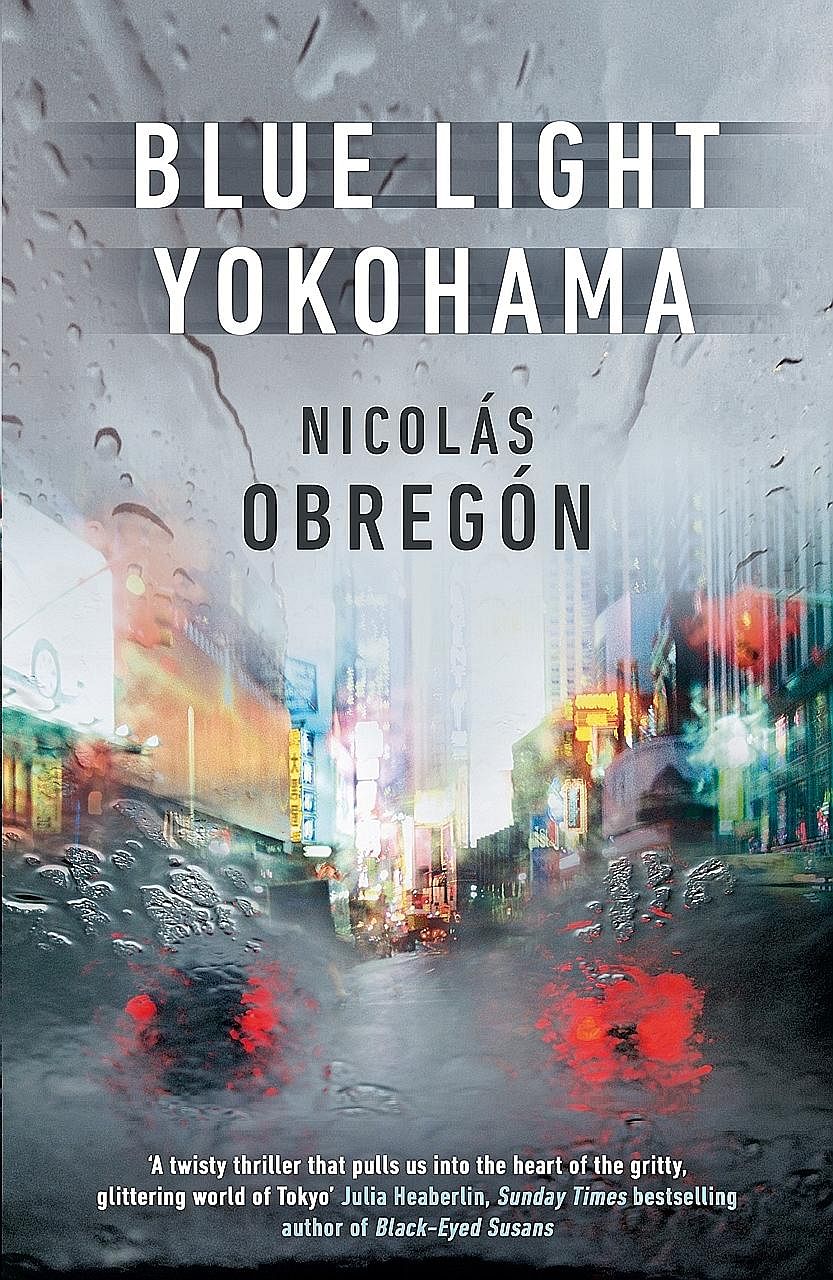FICTION
BLUE LIGHT YOKOHAMA
By Nicolas Obregon Penguin/Paperback/440 pages/ $23.93/ Books Kinokuniya/3.5/5 stars
In 2000, a man sauntered into a humble Miyazawa abode in the central Tokyo suburb of Setagaya and killed the family of four, including two young children, in cold blood.
He then stayed for a few hours, surfing the Internet, eating ice cream and defecating before leaving. Despite having sparked one of the largest manhunts in Japanese history, the culprit has not been nabbed.
The case so haunted debut author Nicolas Obregon - a Japanophile with dual Spanish-British citizenship - that he was, rather perversely, drawn to visit the family's home on his first trip to Tokyo.

The case also inspired this mesmerising crime caper that whisks the reader through the spellbinding bright lights and city scapes of Japan, as well as its grittier side of pachinko parlours, yakuza gangs and cults.
Blue Light Yokohama is the first title in a new crime series that features the enigmatic troubled hero, Inspector Kosuke Iwata, a new transfer to Tokyo's homicide department with his own emotional skeletons in the closet.
His upbringing in the United States means he is not spared the ribbing from his colleagues for his inability to assimilate, and is also a convenient reason for his gumption to question the norm and break protocol in a conformist society.
Paired with the equally brave and headstrong Assistant Inspector Noriko Sakai, they inherit the cult-like "Black Sun" case from Inspector Hideo Akashi, who threw himself off the Rainbow Bridge in the midst of investigations.
The homicide department, overly keen to keep their prestige intact and reputation squeaky clean, tries to make the first murder - in which a family of four was killed in their own home and a black powdery substance used to paint a macabre black sun on the ceiling - an open-and-shut case.
Iwata and Sakai are, of course, unconvinced, and are proven right in what will become a race against time to stop more such killings, where victims have their hearts gouged out in a bloody ritual.
In this story, Obregon references Japan's secret cults that reared their ugly head in 1995 when the doomsday Aum Shinrikyo unleashed the poisonous sarin chemical agent in Tokyo's subway, killing 12 and injuring scores.
It is quite ironic that so little of the story is set in Yokohama, the port city half an hour to the south of Tokyo, but the novel's title refers to a 1968 classic song of the same name by singer Ayumi Ishida, a wistful tune that here forms the basis of Iwata's internal monologues.
Some Western writers tend to fall into the trap of viewing Eastern cultures through predisposed lenses, with the subjectivity oozing into their writing. Obregon stays largely true to form and his area descriptions are so visceral that they will transport readers to Japan.
The series has huge potential and Obregon will hopefully rely much less on standard crime tropes and unnecessary drama as he does here, when the story could be a snapshot of the Japanese psyche.
•If you like this, read: True Crime Japan by Paul Murphy (2016, Tuttle, Books Kinokuniya, $20.01). The non-fiction title is a fascinating compendium of crimes heard in a courtroom in Matsumoto, Nagano, over one year. The cases, including murder and serial theft, provide a glimpse into Japanese society and its judicial system.


